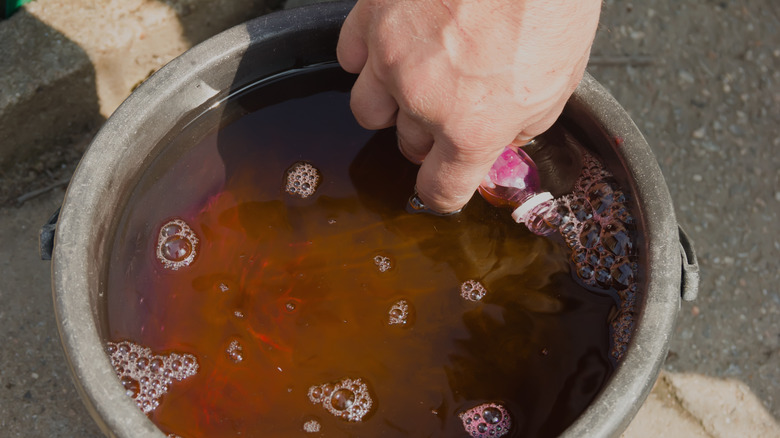We may receive a commission on purchases made from links.
Battling crabgrass can feel like an endless war. This pesky plant, with its resilience and rapid growth rate, has frustrated many homeowners and professional gardeners alike. The secret weapon in the lawn care arsenal? Sponging, also known as spot treating. This method involves applying herbicide directly to the crabgrass, targeting only the unwanted plants without harming the surrounding grass. It’s a precision technique, ideal for addressing those stubborn patches of perennial weeds that threaten to overrun your lawn. This method, allowing for the treatment of specific areas with a high concentration of weeds, is particularly effective against crabgrass, a notorious invader that can be challenging to eliminate.
Crabgrass is a common weed that is hard to get rid of for several reasons. Its ability to spread quickly and blend in with your lawn makes it not only a nuisance but a formidable opponent. Traditional methods of removal often require significant amounts of herbicide, which can inadvertently damage nearby plants and the overall health of your lawn. Overuse of chemicals can lead to a host of problems, including harming beneficial organisms in the soil and contributing to chemical runoff. This is where sponging comes into play. But to make the most of it, it’s important to understand how to do it properly. You’re not just spraying chemicals everywhere, but carefully applying them to just the crabgrass using a regular sponge or an applicator.
How sponging is done

Tackling crabgrass with the sponging technique requires a bit of prep and good timing. First things first, mow your lawn, but skip over those crabgrass spots. Then, leave your lawn alone for about two weeks. This little wait lets the crabgrass shoot up higher than your lawn grass, making it much easier to spot and target. Now, for your main tool: combine Roundup (or any similar herbicide) with a surfactant. This concoction is key because it helps the herbicide stick to the crabgrass, maximizing its impact where you want it.
Next up, grab a sponge and dip it into your herbicide mix — just remember to take the appropriate safety precautions, such as wearing gloves, that are specified on the package. Then, with a gentle hand, brush the top 2 to 3 inches of the crabgrass blades. You’re aiming to coat the weed enough for the herbicide to take effect, without affecting the grass around it. It’s a delicate balance — too little and the crabgrass might survive; too much and you risk harming your lawn.
You’ll likely need to apply herbicide a couple of times, usually over two weeks, to ensure it really soaks in and does its job down to the root. This approach demands patience and accuracy. The right touch can mean the end of crabgrass without causing collateral damage to your lawn. Beyond this careful application, consider the timing of your treatment. Early to mid-summer is often the best time to kill crabgrass, as it’s actively growing and more susceptible to herbicides.
Spot weeders: a tool for precision
If you’re looking for even more precision in your fight against lawn weeds, handheld applicators (known as spot weeders or weed sticks) are a game-changer. These weed sticks offer an accurate, precise method for applying herbicides directly to the weeds you wish to eliminate. Designed with convenience in mind, spot weeders typically feature a sponge or brush head attached to a long stick, allowing you to apply herbicide without bending or kneeling.
The applicator works by placing the sponge head over the weed and pressing down to release a measured dose of herbicide right where it’s needed. This method is mess-free and efficient and ensures that the herbicide is applied exactly where you intend, with no overspray or drips. Commonly available brands like Weed Wand Magic offer a variety of features designed to make weed control as effortless as possible. There’s also the Pixies Garden Weed Wand that offers an ergonomic, lightweight application.
All in all, whether you opt for manual sponging or the convenience of a spot weeder, the key lies in targeted, careful application. By focusing your efforts directly on the problem areas, you can wipe out pesky crabgrass for good, leading to a more vibrant lawn.